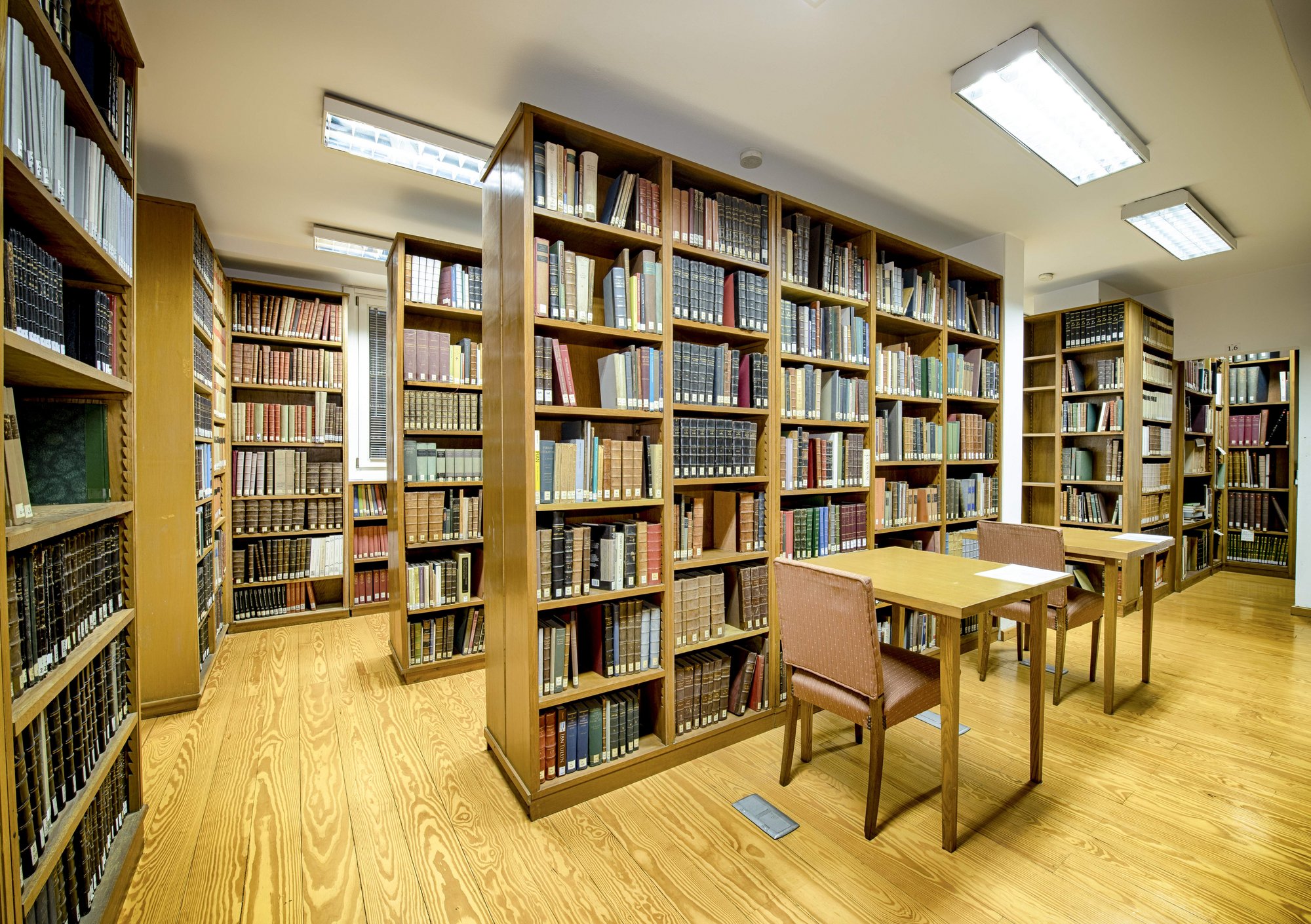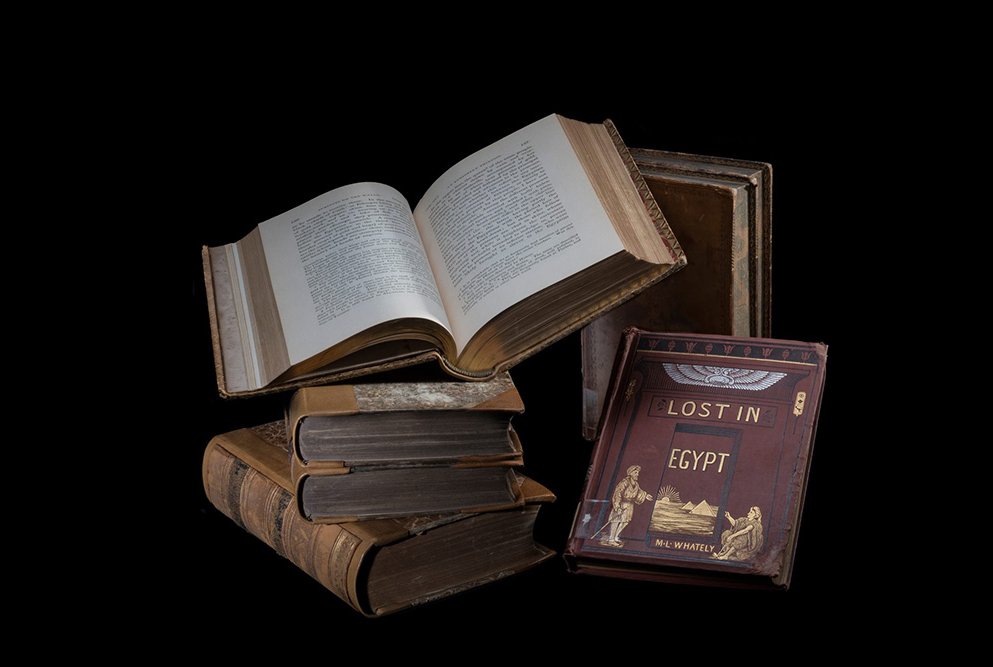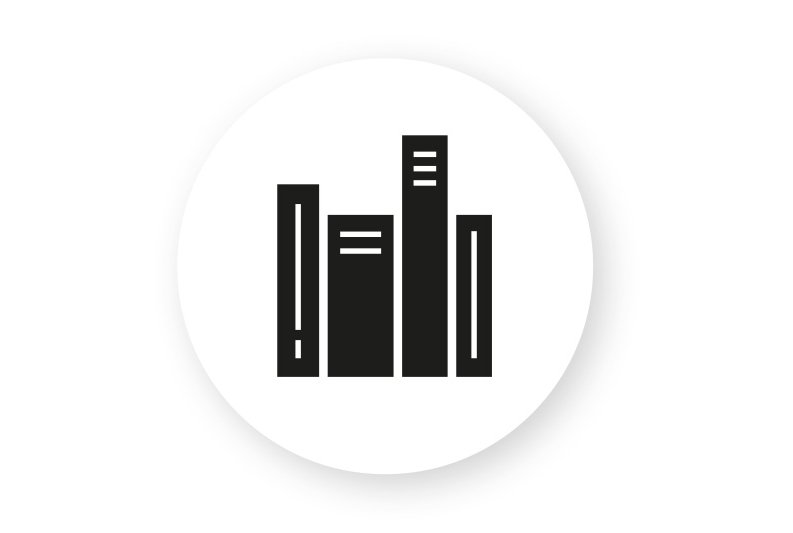
Library © DAI Cairo // B. Ezzat
Library
Profile
The DAI's Cairo library basically builds on the collection by the Egyptologist Ludwig Keimer, which was purchased together with his legacy in 1957. The collection focuses on Egypt's and its neighbouring countries' material and written culture from early history to modern times.
Address & Contact
DAI Cairo Library
31, Sh. Abu el-Feda
11211 Cairo-Zamalek
Librarian: Marietta Sander
Team: Laila el Sawi
Terms of Use
Registration:
bibliothek.kairo@dainst.de
The library is a reference library only, with no lending services. It is not accessible for scholars and students of the covered disciplines only, but to anyone who is interested.
First-time users and guests from abroad are requested to register in advance by e-mail.
The library furnishes two PC workstations with Internet access and 18 work tables. The library's WLAN services are currently unavailable for guests, and there are only limited capacities for xerographic copying in return for a fee of 1,- EGP /page.
News
Opening hours
Sunday 9-16 Uhr
Monday - Thursday 9-13 Uhr
©

History of the Library
Even before its official inauguration in 1907, the Cairo institute already provided over a scholarly library specialised on Egypt whose origins go back to the Leipzig professor Georg Ebers (1837–1898). Baron Friedrich Wilhelm von Bissing (1873–1956) acquired the so-called 'Ebers Bibliothek' after the latter'spassing and donated it to the German state. At the time it counted more than 1,200 volumes, a number which more than doubled to a total of 2,800 by 1914. The library survived almost unscathed WWI and grew to around 6,000 volumes by 1939.
Towards the end of May 1957 a contract was signed with Ludwig Keimer (1892–1957), who lived in Cairo, to take over his library and other material, which resulted to the moving of around 7,000 volumes and 6,550 offprints. This meant that the institute had become the proprietor of the most basic writings on Egyptology and Coptology and the most important works on the archaeology of the Near East, Arabia, the Mediterranean, and Islamic studies. Furthermore, numerous titles on ethnology and African studies were added and moreover supplemented with a large number of scientific works, mainly on botany, zoology, medicine, and pharmacology. Keimer's partly singular collection of travel accounts on Egypt is exceptionally valuable and peers with respect to quality with the world's outstanding libraries. Among its approximately 1,200 titles is an incunabulum on a pilgrimage to the Holy Land published by the Nuremberg patrician Hans Tucher in 1482 which back in the day literally received bestseller status. At the institute's official reopening on 16 November 1957, 10,000 volumes were put on display. To this day, the collection continues to be maintained in Keimer's fibre, with a wide thematic coverage encompassing virtually all pertinent works published in Egypt. Meanwhile, the DAI Cairo library has grown to the second largest foreign archaeological library in Egypt.
Two published papers report on the library's eventful history and on Keimer's unique collection of travel accounts:
I. Lehnert, Was Bücher erzählen. Die Bibliothek des Instituts und die Schätze des Ludwig Keimer, in: G. Dreyer – D. Polz (Ed.), Begegnung mit der Vergangenheit. 100 Jahre in Ägypten (Mainz 2007)
I. Lehnert, A Thousand and One Books. The Early Travel Literature of Ludwig Keimer, in: D. Fortenberry (Ed.), Souvenirs and New Ideas. Travel and Collecting in Egypt and the Near East (Oxford 2013) 80–97.
©

Our Holdings
The focus of the collection is on Egyptology in the broadest sense with its regional and subject-related neighbouring disciplines. It is supplemented by an extensive collection of Islamic studies and by an exquisite collection of old travel literature.
In total, the Institute's library currently counts around 37,000 book titles spread over 46,000 volumes and subscribes to 300 journals and series. Next to more than 3,000 reprints, it also includes maps and non-book media such as microfiches, CD-ROMs, etc. and to an increasing extent also electronic media.
The holdings are arranged by subject in open stacks, albeit with exceptions. Extending over four floors, more than 1,000 m of books are lined up in different languages and formats with heights varying between 10 and 90 cm, to which an average of about 600 more volumes add annually, truly a repository of knowledge and a meeting place for learners and investigators.
Icon iDAI.bibliography © DAI // Tanja Lemke-Mahdavi

Online Catalogue iDAI.bibliography
iDAI.bibliography/ZENON is the central indexing system for our 16 libraries and all our publications. With approximately 1.4 million records, it is one of the world's most important bibliographic reference tools for the literature of Classical Studies. At the same time, iDAI.bibliography also indexes digitised prints from the 16th to 19th centuries, digitised journals and open access publications in Classics. Increasingly, specialist literature without an inventory record is also included, for example as a bibliographic record for networking with the iDAI.world systems.
Icon iDAI.publications © DAI // Tanja Lemke-Mahdavi

iDAI.publications - Knowledge always available
The publication platform iDAI.publications is an important component of the DAI's digital research landscape, iDAI.world. It provides free worldwide access to our online journals and the digital editions of a large number of DAI journals, monographs, serials and edited volumes.
